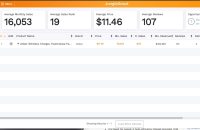How to Integrate a Logistics App into Your Operations?
Logistics and supply chain management are critical to maintaining operational efficiency. As technology continues to evolve, integrating a logistics app into your operations can significantly enhance your ability to manage inventory, streamline shipping processes, and improve overall efficiency.
1. Assess Your Needs
Before selecting a logistics app, assess your specific needs and challenges. Identify the key areas where you need improvement, such as inventory management, shipment tracking, or route optimization. This will help you choose an app that aligns with your operational requirements.
2. Choose the Right App
Research and select a logistics app that fits your needs. Look for features such as real-time tracking, automated inventory management, and integration capabilities with other systems. Read reviews and seek recommendations to ensure the app is reliable and well-supported.
3. Plan the Integration
Develop a detailed plan for integrating the logistics app into your operations. This should include timelines, resource allocation, and a clear outline of the integration process. Ensure that you have a dedicated team or project manager to oversee the implementation.

4. Customize and Configure
Once you’ve chosen an app, customize it to suit your business processes. Configure settings such as user permissions, reporting features, and notification preferences. Tailoring the app to your specific needs will enhance its effectiveness and usability.
5. Train Your Team
Provide comprehensive training for your team on how to use the new logistics app. This includes understanding its features, navigating the interface, and troubleshooting common issues. Effective training will ensure a smooth transition and minimize disruptions to your operations.
6. Test the System
Before fully deploying the app, conduct thorough testing to identify any potential issues. Run simulations to ensure that the app integrates seamlessly with your existing systems and that all features function correctly. Address any problems before going live.
7. Monitor and Evaluate
After the app is integrated, continuously monitor its performance, and evaluate its impact on your operations. Gather feedback from users and track key performance indicators (KPIs) to assess the app’s effectiveness. Adjust as needed to optimize its functionality.
8. Iterate and Improve
Logistics technology is constantly evolving, so stay updated on new features and improvements. Regularly review and update the app to ensure it continues to meet your needs and adapts to any changes in your business operations.
You can effectively integrate a logistics app into your operations, leading to improved efficiency, reduced costs, and enhanced customer satisfaction. The right app, combined with careful planning and execution, can be a game-changer for your logistics and supply chain management.



































































































